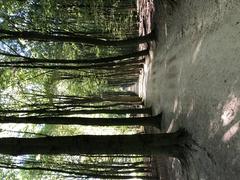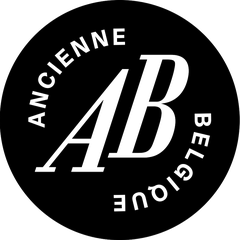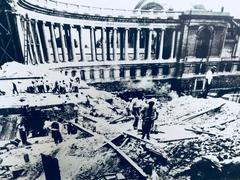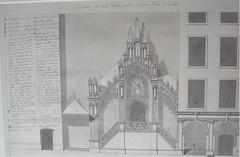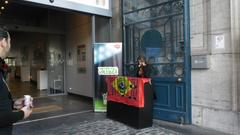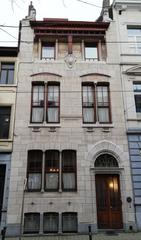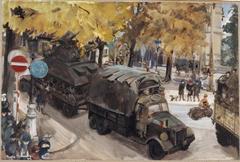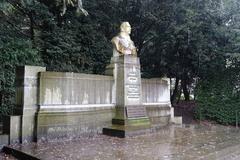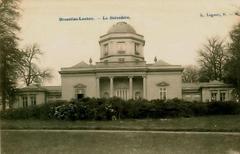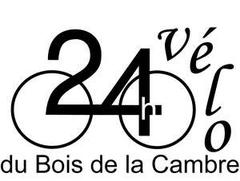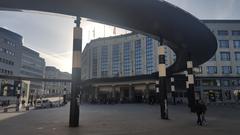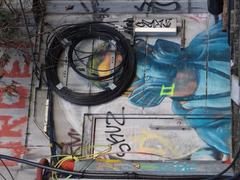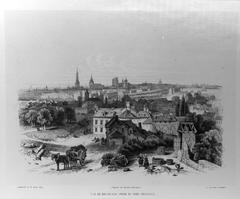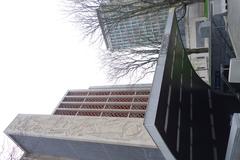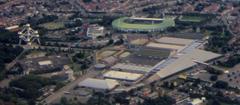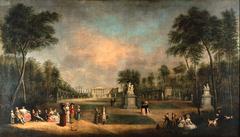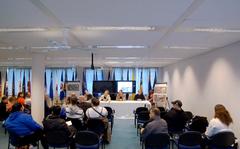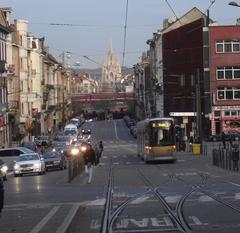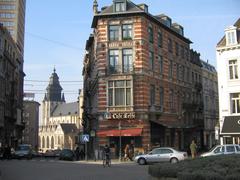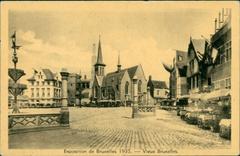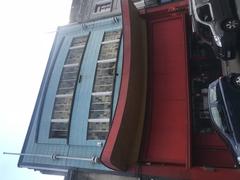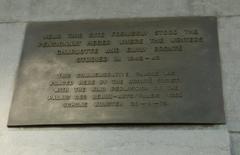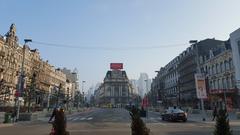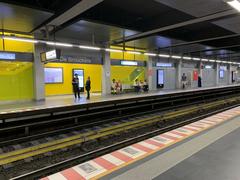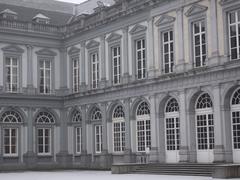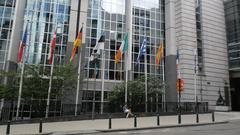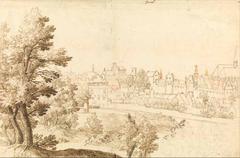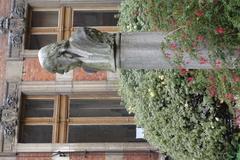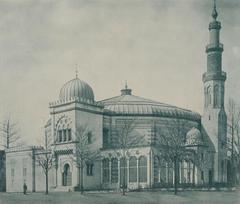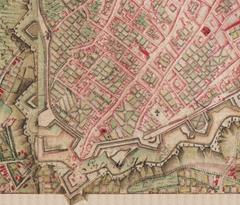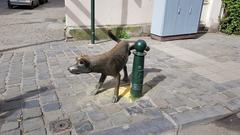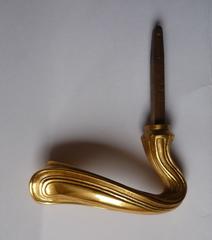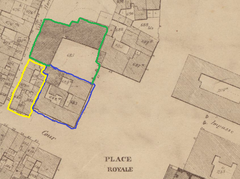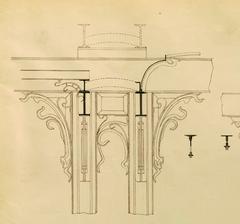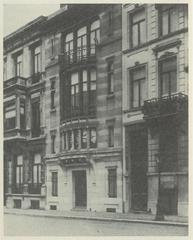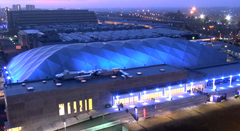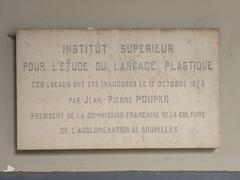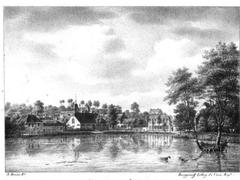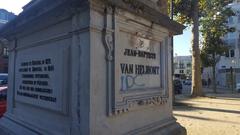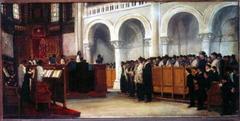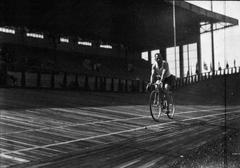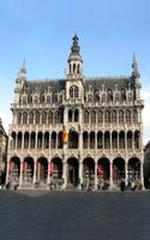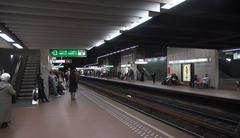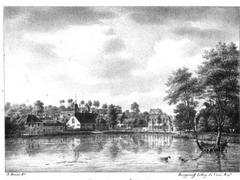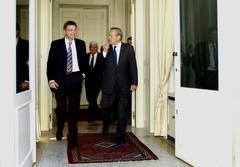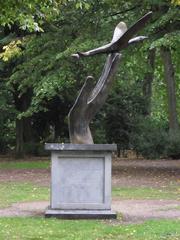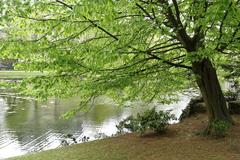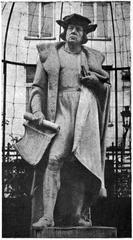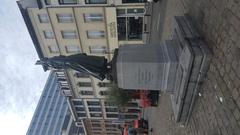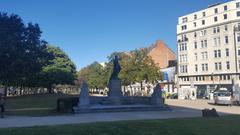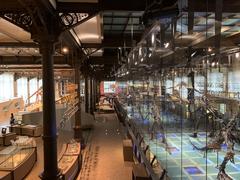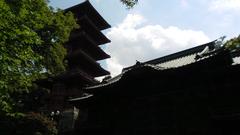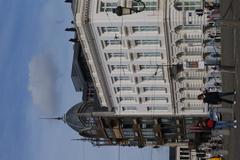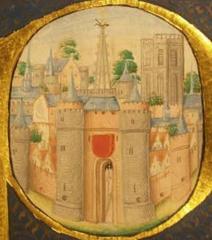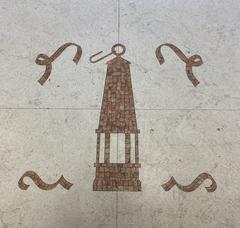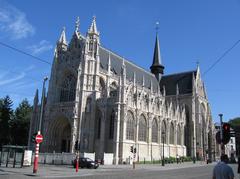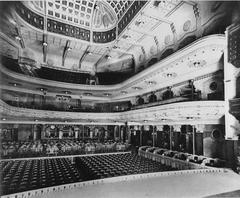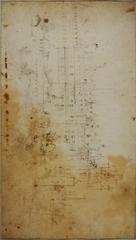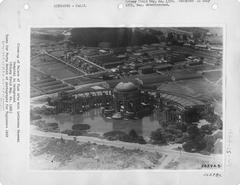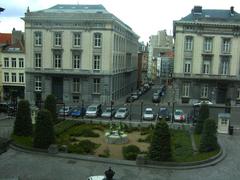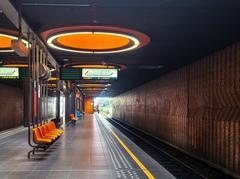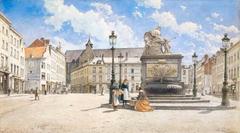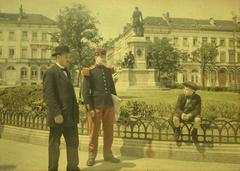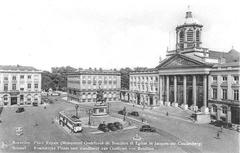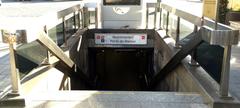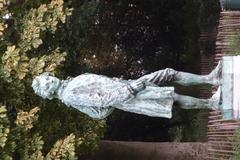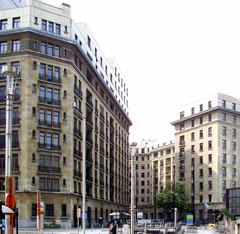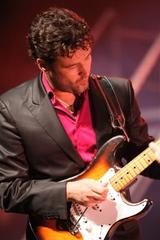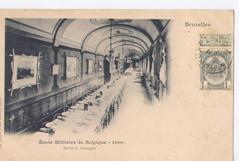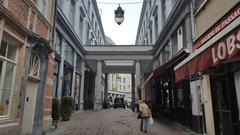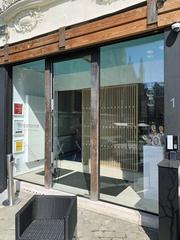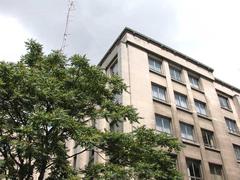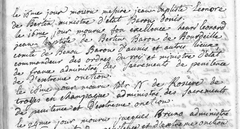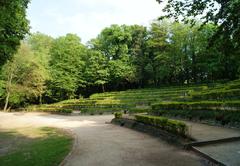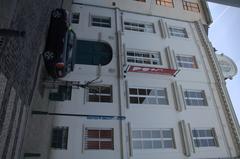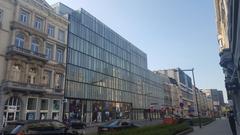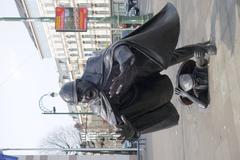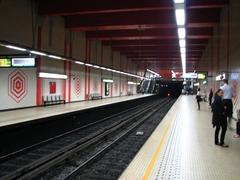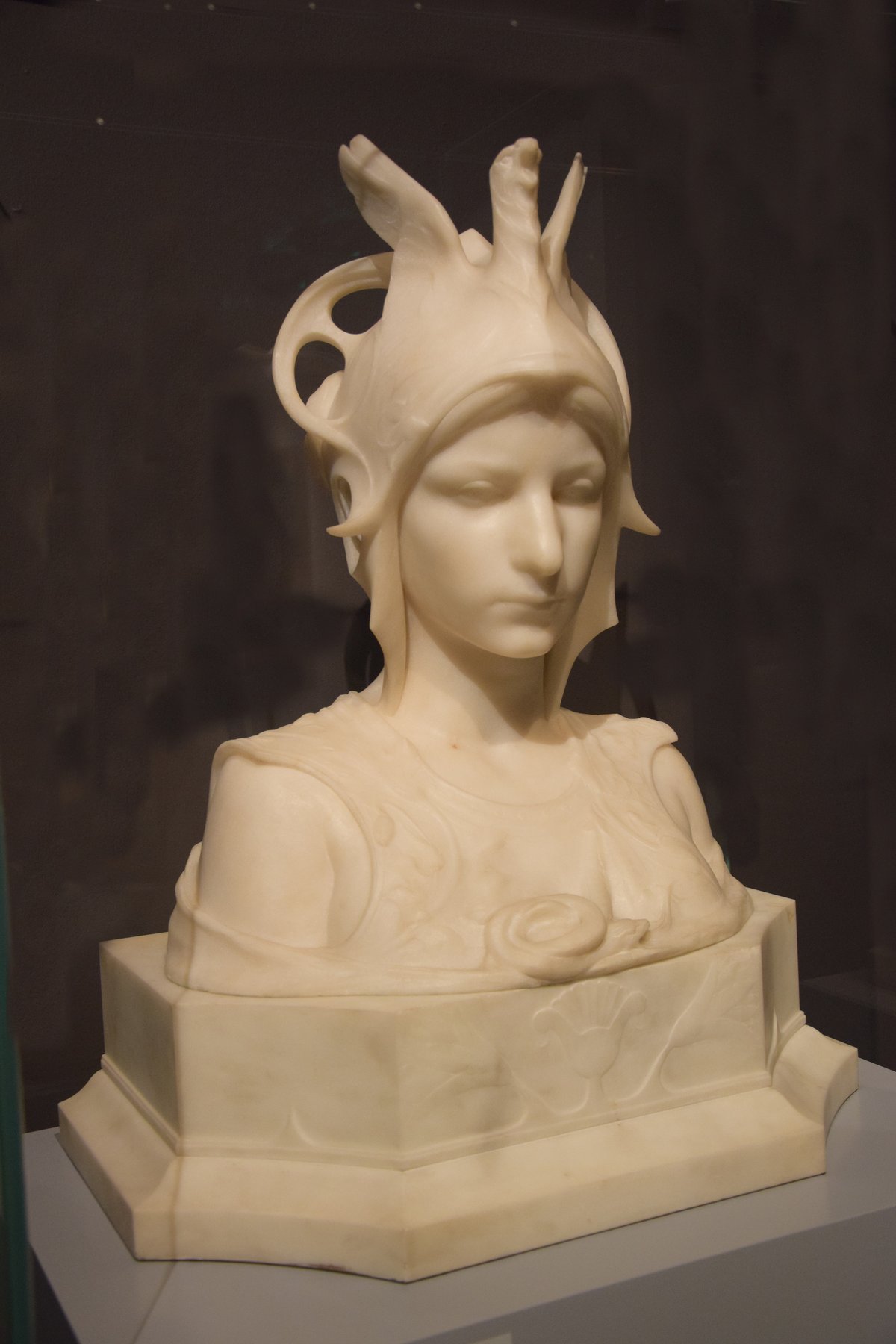
Comprehensive Guide to Visiting the Fin-de-Siècle Museum, Brussels, Belgium
Date: 17/08/2024
Introduction
Located in the heart of Brussels, the Fin-de-Siècle Museum is a captivating destination for anyone interested in the artistic and cultural vibrancy of the late 19th and early 20th centuries. As part of the Royal Museums of Fine Arts of Belgium, the museum immerses visitors in a transformative era marked by Art Nouveau, Impressionism, Symbolism, and other avant-garde movements. Inaugurated on December 6, 2013, and housed in the historic Hôtel des Brasseurs, the museum pays homage to Brussels’ pivotal role as an artistic crossroads during the fin-de-siècle period (Wikipedia).
The building, designed by renowned architect Alphonse Balat—also known for the Royal Greenhouses of Laeken—adds another layer of historical depth. The Fin-de-Siècle Museum’s collection includes masterpieces by artists such as Constantin Meunier, James Ensor, and Victor Horta, making it an essential stop for art lovers (We Love Brussels; Royal Museums of Fine Arts of Belgium).
This guide provides everything you need for a memorable visit: historical context, collection highlights, practical visitor information, and updates on ongoing renovations. Whether you’re a seasoned art enthusiast or a curious traveler, the Fin-de-Siècle Museum offers an engaging exploration of a pivotal moment in European cultural history.
Table of Contents
- Introduction
- History and Significance
- Collection Highlights
- Visitor Information
- Challenges and Renovations
- Recent Developments
- Visitor Experience
- Special Events and Tours
- Significance in Context
- Future Prospects
- FAQ
- Conclusion
- References
History and Significance
Origins and Establishment
The Fin-de-Siècle Museum occupies a prominent place in Brussels’ Royal Quarter. Officially inaugurated in late 2013, it forms part of the Royal Museums of Fine Arts of Belgium. The museum is housed in the neo-classical Hôtel des Brasseurs, adjacent to the Oldmasters Museum on Place Royale (Wikipedia).
Artistic Context
Focusing on the years 1884 to 1914, the museum highlights an era when Brussels emerged as a dynamic artistic hub. The establishment of the Société Libre des Beaux-Arts in 1884 catalyzed a period of remarkable creativity, with the city becoming synonymous with Art Nouveau and home to movements like Impressionism, Realism, Symbolism, and Pointillism.
Architectural Significance
The museum’s building, designed by Alphonse Balat, was constructed in 1880 and enhances the cultural prestige of the museum. Its majestic architecture, featuring refined neo-classical elements, stands as a testament to Brussels’ rich artistic legacy (We Love Brussels).
Collection Highlights
The Fin-de-Siècle Museum offers a comprehensive survey of art from the late 19th and early 20th centuries. Its collections encompass paintings, drawings, watercolors, prints, sculptures, photographs, decorative arts, and more.
Art Nouveau and Beyond
Brussels was a center for a range of artistic movements during the fin-de-siècle, and the museum’s collection reflects this diversity. Highlights include:
- Paintings and sculptures by Constantin Meunier, James Ensor, Fernand Khnopff, Léon Spilliaert, Henri Evenepoel, and George Minne.
- Decorative objects from the Art Nouveau period, including furniture, jewelry, and glassware by Victor Horta, Louis Majorelle, Émile Gallé, Loetz Witwe, and Henry Van de Velde.
- International works by artists such as Paul Gauguin, Auguste Rodin, Pierre Bonnard, and Alphonse Mucha (We Love Brussels; Royal Museums of Fine Arts of Belgium).
Visitor Information
Location and Accessibility
Address: Regentschapsstraat 3, 1000 Brussels, Belgium
The museum is centrally located and easily accessible via public transportation. The nearest metro station is Parc (Lines 1 and 5), and several tram and bus lines serve the area. Parking nearby is limited, so public transportation is recommended.
Accessibility: The museum is fully wheelchair accessible, with elevators and ramps throughout. Wheelchairs are available at the entrance, and guide dogs are welcome.
Opening Hours
- Monday: Closed
- Tuesday to Friday: 10:00 AM – 5:00 PM
- Saturday & Sunday: 11:00 AM – 6:00 PM
Always check the official website for the most current information, especially during holidays or special events.
Admission Fees
- Adults: €10
- Seniors (65+): €8
- Students (with valid ID): €5
- Children (under 18): Free
- Groups (15+): €7 per person
Tickets can be purchased online or at the museum. Advance booking is recommended for groups.
Facilities
- Cloakroom: Free service for coats and bags
- Restrooms: Available on multiple floors
- Café and Shop: Enjoy refreshments and browse art-themed merchandise
Challenges and Renovations
The museum occupies underground spaces formerly used by the Museum of Modern Art, a transition that initially faced public criticism. Concerns included limited natural light and challenging signage. To address these issues, major renovations began in January 2024, temporarily closing the museum to the public. These efforts are part of a broader restructuring program designed to improve accessibility and visitor experience (We Love Brussels; Royal Museums of Fine Arts of Belgium).
Recent Developments
Ongoing construction and reorganization are aimed at enhancing the museum’s infrastructure, updating exhibition spaces, and reaching a broader audience. The renovations reflect a commitment to maintaining the museum’s relevance and educational mission in the 21st century (Royal Museums of Fine Arts of Belgium).
Visitor Experience
A visit to the Fin-de-Siècle Museum is both immersive and educational, guiding guests through the dazzling landscape of Brussels’ artistic golden age. The layout encourages exploration of different movements, from fine arts to decorative arts, providing a well-rounded perspective on the era’s creativity (Brussels Museums).
Visitor Tips:
- Check for special exhibitions or guided tours before your visit.
- Photography is allowed in most areas (no flash/tripods).
- Combined tickets are available for other Royal Museums of Fine Arts institutions.
Special Events and Tours
The museum regularly offers guided tours, temporary exhibitions, lectures, workshops, and family activities. These enrich the visitor experience and provide deeper insights into the fin-de-siècle period. Consult the museum’s events calendar for current offerings.
Significance in Context
Beyond its impressive collection, the Fin-de-Siècle Museum plays a vital role in preserving Brussels’ cultural heritage and educating the public about a transformative era in European art. Its exhibitions contextualize the city’s contributions to modern art and highlight the interplay between social change and artistic innovation (Girl with the Passport).
Future Prospects
With renovations underway, the museum is poised for a new chapter. Improved facilities and innovative programming will further its mission of accessibility and engagement, ensuring the Fin-de-Siècle Museum remains a cornerstone of Belgian and European art history (Royal Museums of Fine Arts of Belgium).
Frequently Asked Questions
Q: What are the Fin-de-Siècle Museum’s visiting hours?
A: Tuesday to Friday: 10:00 AM–5:00 PM; Saturday and Sunday: 11:00 AM–6:00 PM; closed on Mondays.
Q: What is the cost of admission?
A: €10 for adults; €8 for seniors; €5 for students; free for children under 18; €7 for groups (15+).
Q: Is the museum accessible to visitors with disabilities?
A: Yes, with elevators, ramps, and accessible restrooms. Assistance and wheelchairs are available upon request.
Q: Can I take photos in the museum?
A: Yes, but without flash or tripods, and check for restrictions in special exhibitions.
Q: What attractions are nearby?
A: Magritte Museum, Oldmasters Museum, Musical Instruments Museum, and Grand Place are all within walking distance.
Conclusion
The Fin-de-Siècle Museum stands as a vibrant tribute to an era that shaped modern Brussels and European art. Its rich collections, educational initiatives, and ongoing improvements make it an essential destination for anyone passionate about art and cultural history. As the museum undergoes renovations, it remains dedicated to accessibility and innovation, ensuring that future generations will continue to be inspired by the fin-de-siècle spirit (We Love Brussels; Royal Museums of Fine Arts of Belgium).
References
- Fin-de-Siècle Museum. (n.d.). In Wikipedia. Retrieved August 17, 2024, from https://en.wikipedia.org/wiki/Fin-de-Siècle_Museum
- Fin-de-Siècle Museum Brussels. (2022, December). We Love Brussels. Retrieved August 17, 2024, from https://welovebrussels.org/2022/12/fin-de-siecle-museum-brussels/
- Royal Museums of Fine Arts of Belgium. (n.d.). Musée Fin-de-Siècle Museum. Retrieved August 17, 2024, from https://fine-arts-museum.be/en/museums/musee-fin-de-siecle-museum
- Brussels Museums. (n.d.). Fin-de-Siècle Museum. Retrieved August 17, 2024, from https://www.brusselsmuseums.be/en/museums/fin-de-siecle-museum
- Girl with the Passport. (n.d.). Best Museums in Brussels. Retrieved August 17, 2024, from https://www.girlwiththepassport.com/best-museums-in-brussels/




